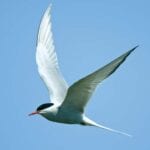Your cart is currently empty!
Volcanic activity in Iceland.
Iceland is a volcanic island, situated 50/50 on the North American tectonic plate and Eur Asian tectonic plate. The North Atlantic ridge crosses Iceland from south west diagonally through the country to north east and the plates are moving apart from each other, 2 centimeters per year.
Under Iceland, undir Vatnajökull the biggest glacier in Iceland is the hot spot, which is one of the reasons that the country is so volcanic. The biggest volcanic system and the most active is in Grímsvötn, under the glacier. It is difficult to estimate the numbers of volcanoes in Iceland, as scientists do know for sure for many of them which are active and which are not. Volcanoes that have been considered inactive, suddenly erupt like Eyjafjallajökull in 2010. No one expected that mountain to erupt in the near future, but it was clearly active.
Today there are many of the active volcanoes, due on time or they have followed a certain pattern in eruptions and it’s time for a new eruption for many of them. For example Katla. In historical times in Iceland, Katla used to erupt approximately every 40-80 years, but the last eruption was in 1918, so it’s about 103 year since the last eruption. This mountain is observed very closely. There are others like Hekla, also a very big volcano system that are due on time.
On average, every four year there is an eruption in Iceland, but our scientists usually give warnings in good time so the danger for people is very limited.There are several websites with thorough information about volcanoes and volcanic activity in Iceland, like: https://icelandicvolcanos.is/.
Uncategorized
- Reykjanes geopark & Geldingadalir eruption23/03/2021
- History of Iceland22/03/2021
- Migrating birds16/03/2021
- Reykjanes geopark & Geldingadalir eruption
- Please authorize with your Instagram account here
Connect to Us
Contact Info
+354 899 8550
[email protected]Address:
Harpa Travel ehf
Skúlagata 40a
101 Reykjavik
Iceland
kt. 600989-7079Partners






